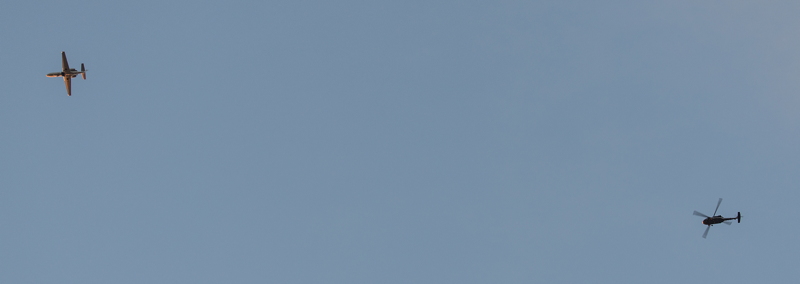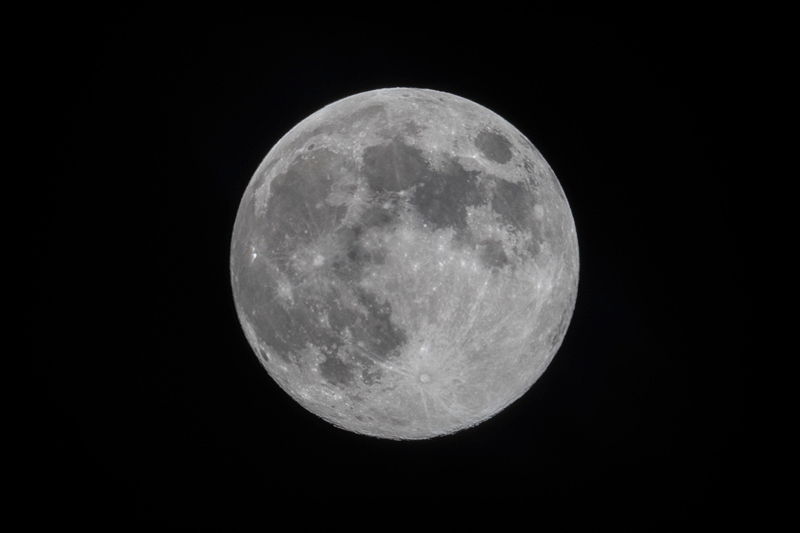Jet-Helicopter Formation;
Rising Full Moon
Posted: 31 March 2018
Friday morning, 30 March 2018, was clear so I decided to try to view the west coast launch of the SpaceX Falcon 9 rocket shortly after sunrise. However, the sky was too bright here to see it. So sunset launches from Vandenberg Air Force Base in California remain the best time to see one, as I did on Friday, 22 December 2017. I was also able to view and photograph the nighttime SpaceX Falcon Heavy upper stage rocket burn on Tuesday, 6 February 2018.
Friday was clear most of the day, but as sunset approached clouds began arriving.
|
Open: Friday, 30 March 2018, 1819 MST Temperature: 88°F |
Session: 1216 Conditions: Partly cloudy |
Equipment Used:
12" f/8 LX600 w/StarLock
2" 24mm UWA eyepiece
Focal Reducer
Camera:
D850 DSLR
1833 MST: LX600 ON, StarLock OFF, High Precision OFF.
1835 MST: viewed Venus, 102X, through thin clouds.
I then heard a helicopter approaching. When I looked out of the observatory I saw a small jet being followed by the helicopter:

Click or tap on image for larger version
The jet has some special equipment visible in the photo along the bottom of the fuselage.
1842 MST: took this photo of the western sky using an iPhone 8 Plus:

1843 MST: sunset.
1847 MST: last look at Venus in the clouds, 102X.
Slewed the 12" telescope to the location of the nearly Full Moon (it would be precisely Full at 0536 MST the next morning). It was still behind the hill to the east.
1857 MST: mounted the D850 DSLR at prime focus + focal reducer.
1858 MST: the Moon began rising over the hill. This photo was taken using 1/125sec, ISO 100:

1905 MST: the Moon cleared the hill (1/320sec, ISO 100):

For these Moon images I tested a feature of the Nikon D850 DSLR: Silent Live View Photography. In the past I always used the Mirror-Up option when doing astrophotography with my Nikon DSLRs to avoid vibrations from the mirror movement. I would usually wait a couple of seconds to let any possible vibrations from the mirror movement dampen out before actually taking the exposure. With Silent Live View Photography the mirror is already up as Live View is being used to view the scene on the camera's viewscreen. Normal photography would use the mechanical shutter, which creates its own vibrations (although I never had a problem with that). Silent Live View Photography uses an electronic shutter, so there is nothing moving and no shutter noise. I will continue to use Silent Live View Photography for some types of astrophotography when it makes sense to use Live View. For faint object imaging Live View is not as useful so using Mirror-Up will be used.
1910 MST: removed the DSLR and viewed the nearly Full Moon, 102X. A slight terminator was visible (about 10.5 hours before precisely Full).
Clouds were now in most of the sky. Began closing up the observatory.
|
Close: Friday, 30 March 2018, 1925 MST Temperature: 72°F |
Session Length: 1h 06m Conditions: Mostly cloudy |
Comments are welcome using Email. Twitter users can use the button below to tweet this report to their followers. Thanks.
Cassiopeia Observatory Home Page
Copyright ©2018 Michael L. Weasner / mweasner@me.com
URL = http://www.weasner.com/co/Reports/2018/03/31/index.html
